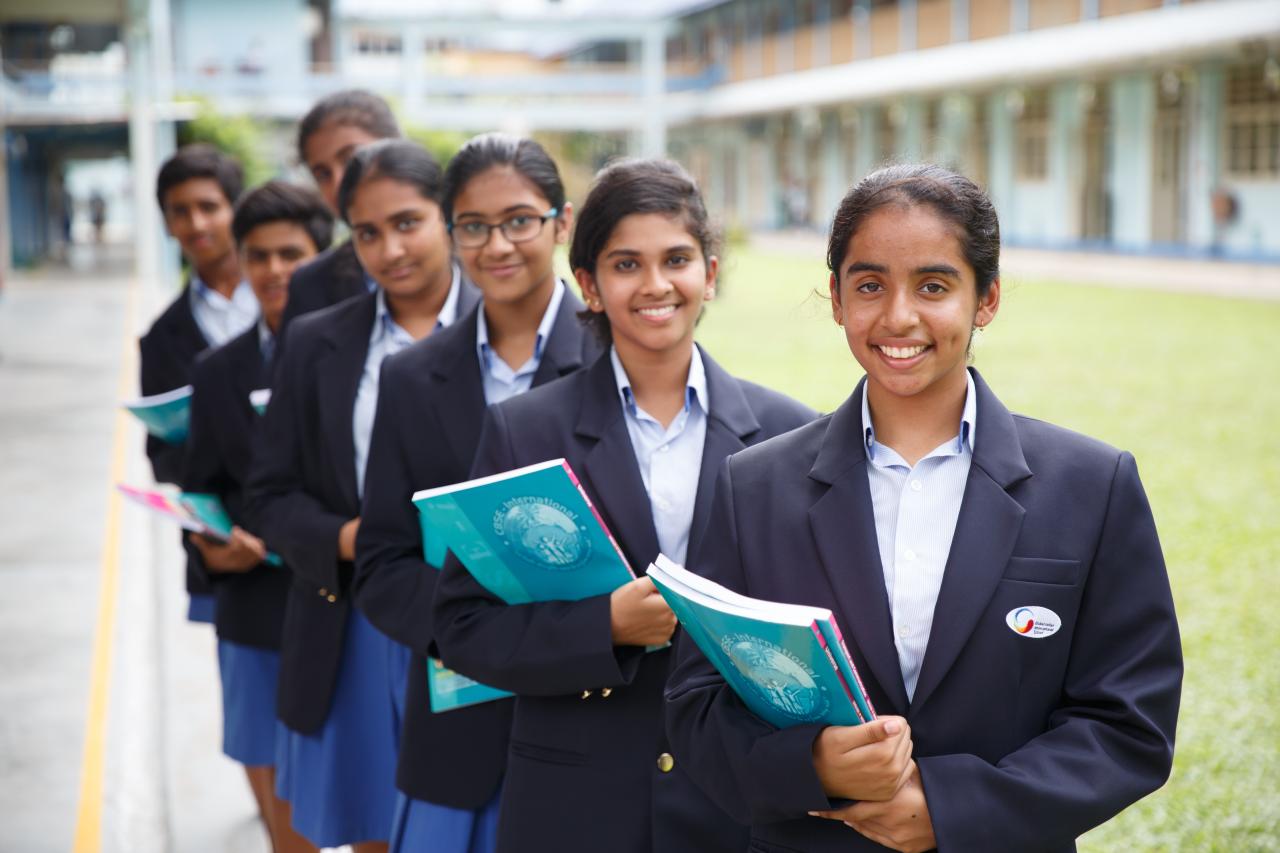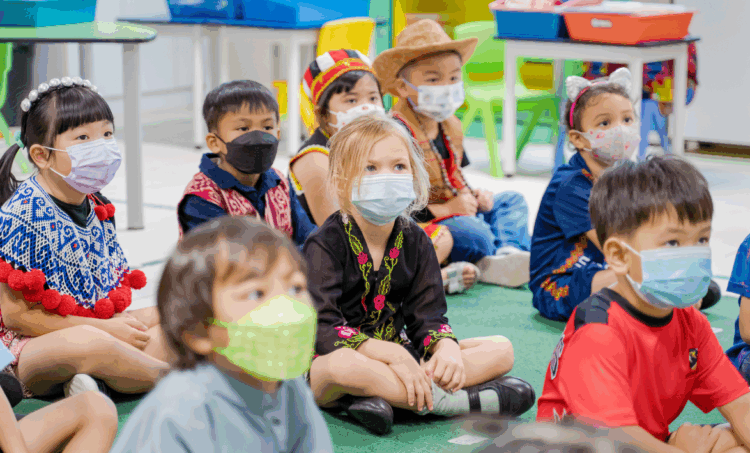The Interconnected World

The dawn of the 21st century has ushered in an era of unprecedented global interconnectedness. Technologies like the internet, social media, and advanced communication tools have shrunk the world, making it possible to connect with individuals and cultures across continents instantaneously. This pervasive globalization has profound implications for education.
A. Complex Global Challenges: Humanity faces a myriad of complex, interconnected global challenges that transcend national borders: climate change, pandemics, economic disparities, social injustices, and political instability. Solving these issues requires collaborative efforts from diverse perspectives and a deep understanding of different cultures. Students today will be the leaders and innovators tasked with tackling these problems, and they must be equipped with the skills to collaborate globally.
B. Globalized Workforce: The modern workforce is increasingly globalized. Many companies operate across multiple countries, and even local businesses often interact with international clients, suppliers, or teams. Future employees will need to possess strong cross-cultural communication skills, adaptability, and the ability to work effectively with individuals from different backgrounds. Global collaboration in schools directly prepares students for this reality.
C. Rise of Digital Communication: Digital platforms have made international communication more accessible and affordable than ever before. This technological infrastructure provides fertile ground for schools to connect and collaborate, regardless of their geographical location. It removes traditional barriers of distance and cost, making truly global classrooms a possibility for any institution with internet access.
D. Promoting Empathy and Understanding: In a world often marked by conflict and misunderstanding, fostering empathy and cross-cultural understanding is paramount. Direct interaction with peers from different nations helps students develop a nuanced appreciation for diverse perspectives, traditions, and ways of life. This firsthand experience goes far beyond what textbooks can convey, building bridges of understanding and respect.
E. Enriching Learning Experiences: Exposure to different educational systems, teaching methodologies, and cultural contexts enriches the learning experience for students. It broadens their horizons, challenges their assumptions, and encourages critical thinking about global issues from multiple viewpoints.
The Profound Benefits of Global Collaboration in Schools
Engaging in global collaboration yields a wealth of advantages for students, educators, and the entire school community, transcending traditional academic benefits.
A. Enhanced Cultural Understanding and Empathy: Direct interaction with students from different countries helps break down stereotypes and prejudices. Students learn about diverse cultures, traditions, and perspectives firsthand, fostering a deep sense of empathy and appreciation for global diversity. This moves beyond theoretical knowledge to practical, lived understanding.
B. Improved Communication Skills: Students develop superior communication skills as they navigate linguistic and cultural differences. They learn to articulate their ideas clearly, listen actively, and adapt their communication style for a global audience, often using technology as a primary medium. This includes both verbal and written communication, as well as digital etiquette.
C. Development of Global Competence and Citizenship: Global collaboration instills a sense of global citizenship, encouraging students to see themselves as part of a larger interconnected world. They develop an understanding of global issues and their roles and responsibilities in addressing them. This cultivates a proactive stance towards global challenges and promotes responsible actions.
D. Honed Problem-Solving and Critical Thinking Skills: Collaborative projects focused on global issues require students to analyze complex problems from multiple angles, synthesize diverse information, and work together to devise creative solutions. This process sharpens their critical thinking and problem-solving abilities within a real-world context.
E. Boosted Digital Literacy and Technology Skills: Participating in global collaborative projects often necessitates the use of various digital tools for communication, research, and content creation (e.g., video conferencing, collaborative document editing, online presentation tools). This naturally enhances students’ digital literacy and comfort with modern technologies.
F. Increased Motivation and Engagement: The novelty and real-world relevance of global projects can significantly boost student motivation and engagement. Working with peers from different parts of the world on a shared goal makes learning more exciting, meaningful, and less confined to the classroom.
G. Preparation for a Globalized Workforce: As discussed, future careers will increasingly demand cross-cultural collaboration. Experiences in global school projects provide students with practical skills and an international mindset that are highly valued in today’s global job market, making them more adaptable and competitive professionals.
H. Enriched Curricular Content: Global partnerships allow for the co-creation of unique and culturally rich learning materials. Students can share local stories, perspectives, and resources, enriching the curriculum for all participants and bringing lessons to life in unprecedented ways.
I. Professional Development for Educators: Teachers involved in global collaboration also benefit immensely. They gain new perspectives on pedagogy, learn about different educational systems, and develop their own cross-cultural communication and digital collaboration skills, leading to continuous professional growth.
J. Development of a Global Network: For students, connecting with peers from around the world can lead to lasting friendships and a valuable international network that extends beyond their schooling years. For institutions, it can open doors to future partnerships, exchange programs, and shared research opportunities.
Innovative Approaches to Fostering Global Collaboration

The methods for facilitating global collaboration in schools are as diverse as the technologies available. Here are some effective approaches:
A. Virtual Exchange Programs: These programs connect classrooms in different countries through online platforms. Students engage in shared projects, discussions, and video conferences, working together on topics ranging from environmental issues to cultural comparisons. Platforms like Skype in the Classroom, ePals, and specific university-led initiatives facilitate these connections.
B. Collaborative Online Projects (COPs): Students from different schools or countries work together on a specific project using online tools such as Google Workspace (Docs, Slides, Sheets), Microsoft 365, Trello, or dedicated project management software. This could involve creating a joint presentation, a digital story, or a research report.
C. Global Debates and Forums: Organizing virtual debates or online forums on global issues (e.g., climate change, human rights, sustainable development) allows students to share their perspectives, critically analyze arguments, and engage in respectful dialogue with peers from diverse backgrounds.
D. Cultural Exchange Pen Pal Programs (Digital and Traditional): Modernizing the traditional pen pal concept, students can exchange emails, video messages, or even use social media platforms (under strict supervision) to share aspects of their daily lives, culture, and learning experiences with international counterparts.
E. Joint Research Projects: Students from different schools collaborate on research projects related to shared global interests, leveraging diverse local resources and perspectives. For example, comparing local environmental policies or analyzing social trends in their respective countries.
F. Virtual Field Trips and Shared Learning Experiences: Using VR/AR technologies, students can take virtual field trips to international landmarks, museums, or even participate in simulations of global events with their international partners, creating shared immersive learning experiences.
G. Cross-Cultural Storytelling and Media Creation: Students from different countries can collaborate to create digital stories, documentaries, podcasts, or multimedia presentations that showcase their cultures, local issues, or shared understanding of global topics.
H. Educator Professional Learning Networks (PLNs): Teachers themselves can form global professional learning networks to share best practices, collaborate on curriculum design, and collectively address challenges in global education. This models collaborative behavior for their students.
I. Partner School Relationships: Establishing formal long-term partnerships between schools in different countries allows for more in-depth and sustained collaboration, potentially including student and teacher exchange programs, curriculum co-development, and shared extracurricular activities.
Challenges in Implementing Global Collaboration
While the benefits are compelling, schools embarking on global collaboration often face practical and logistical challenges:
A. Time Zone Differences: Coordinating live activities, such as video conferences or synchronous collaborative sessions, can be challenging due to significant time zone disparities between partner schools. This often requires flexible scheduling and creative solutions.
B. Language Barriers: While English is a common lingua franca in many international exchanges, significant language barriers can still exist, especially with non-native speakers. Translation tools can help, but patience and clear communication strategies are essential.
C. Technological Infrastructure and Access: Disparities in internet connectivity, device availability, and access to necessary software can create significant inequities and hurdles for seamless collaboration, particularly between schools in developed and developing countries.
D. Curriculum Alignment: Finding common ground and aligning project goals with the diverse curricula of partner schools can be complex. Projects need to be flexible enough to accommodate different learning objectives and national educational standards.
E. Cultural Sensitivity and Nuances: Understanding and respecting cultural differences is paramount. Misunderstandings can arise from different communication styles, social norms, or pedagogical approaches, requiring careful guidance from educators.
F. Funding and Resources: Implementing and sustaining global collaboration initiatives may require additional funding for technology, professional development, and potentially travel (for exchanges). Securing these resources can be a challenge.
G. Teacher Preparedness and Professional Development: Many educators may not have prior experience with global collaboration or the necessary digital skills. Providing adequate training, ongoing support, and opportunities for teachers to connect with global peers is crucial.
H. Sustainability of Partnerships: Initiating a global partnership is one thing; sustaining it over the long term requires commitment, clear communication, and consistent effort from both sides. High teacher turnover or changes in school priorities can jeopardize partnerships.
I. Data Privacy and Safety Concerns: When connecting students across borders, ensuring data privacy, online safety, and compliance with various international regulations (e.g., GDPR, COPPA) is paramount and requires robust protocols.
J. Measuring Impact and Outcomes: Objectively measuring the impact of global collaboration on specific learning outcomes, such as cultural competence or global citizenship, can be challenging and requires effective assessment frameworks.
The Future of The Globally Connected Classroom
The trajectory of education is unequivocally towards a more globally integrated and collaborative model. As the world continues to shrink and interconnectedness intensifies, the skills fostered through global collaboration will become not just desirable, but essential for future success.
The traditional model of a teacher imparting knowledge to a class of students within four walls is being augmented by dynamic, borderless learning environments. The classroom of the future will be a portal, connecting students to peers, experts, and cultures worldwide. This shift promises to:
- Democratize Knowledge: Breaking down geographical barriers to learning, allowing students in remote areas to access diverse perspectives and resources.
- Cultivate Global Innovators: Preparing students to collaboratively tackle humanity’s grand challenges, drawing on collective intelligence and diverse solutions.
- Foster Peace and Understanding: Building bridges between cultures from a young age, promoting empathy and reducing prejudice, thereby contributing to a more harmonious global society.
- Personalize Learning: By offering a wider array of project topics and collaboration partners, students can pursue their interests in a globally relevant context.
Conclusion
Investing in global collaboration in schools is not merely an educational enhancement; it is an investment in global peace, prosperity, and sustainable development. By nurturing a generation of globally competent citizens who are empathetic, digitally literate, and skilled in cross-cultural communication, we are building a more resilient, understanding, and interconnected world for everyone. The globally connected classroom is not a distant dream; it is rapidly becoming the standard for preparing students for the complex realities and exciting opportunities of the 21st century.









